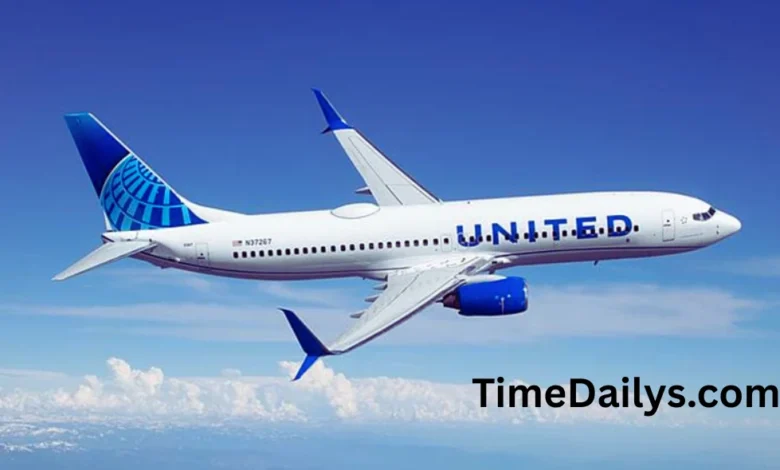What Really Happened on United Airlines Flight UA770 Emergency Diversion?

Introduction: Understanding the United Airlines Flight UA770 Emergency Diversion
The sudden United Airlines flight UA770 emergency diversion left many travellers and aviation watchers searching for answers. For passengers on board, the experience was unsettling, while for those following the story, it raised important questions about airline safety, passenger rights, and emergency handling procedures.
When an aircraft diverts, it isn’t a decision taken lightly. Airlines follow strict safety protocols, and such actions often highlight both the risks and the reliability of modern aviation. This article breaks down what happened, why the diversion took place, and what it means for passengers.
The Events Leading to the Diversion
Every emergency diversion has a trigger, and flight UA770 was no exception. Shortly after departure, reports indicated an unexpected technical issue that required immediate attention. The flight crew, trained to manage such scenarios, communicated with air traffic control and made the call to reroute the aircraft.
Passengers described the mood as tense but controlled. Flight attendants remained calm, reassured travellers, and followed procedure step by step. Diversions like this show how vital crew training is in keeping situations under control.
Why Diversions Like Flight UA770 Happen
Emergency diversions aren’t rare in aviation, though they always catch headlines. They can happen for several reasons:
- Mechanical issues: Faults with engines, hydraulics, or cabin systems.
- Medical emergencies: A passenger’s health condition requiring urgent care.
- Weather conditions: Sudden storms or unsafe landing conditions at the destination.
- Security concerns: Suspicious activity or threats on board.
In the case of United Airlines flight UA770 emergency diversion, safety was the top priority. Even when the issue isn’t life-threatening, regulations require airlines to act in the safest interest of everyone on board.
Passenger Experience During the Diversion
Accounts from travellers reveal mixed emotions, some felt anxious, others praised the professionalism of the crew. Many noted clear announcements from the cockpit, which helped reduce panic.
One passenger shared that although the landing was unexpected, staff kept the atmosphere calm. This highlights a key part of aviation safety: communication. Passengers trust that airlines will keep them informed, and UA770 showed the importance of that trust.
The Official Airline Response
United Airlines quickly issued a statement after the incident. The airline confirmed that the diversion was precautionary and that the aircraft landed safely. They reassured customers that passenger safety remains their top priority.
Such statements aren’t just corporate formality, they build public confidence. Airlines must balance transparency with reassurance, making sure customers understand that while diversions can be unsettling, they are evidence of safety systems working correctly.
FAA and Aviation Authority Involvement
Whenever an incident like this occurs, aviation authorities such as the Federal Aviation Administration (FAA) step in. Their role is to investigate, verify details, and ensure no broader safety concerns exist.
The FAA’s review of United Airlines flight UA770 emergency diversion looked into the technical fault, pilot decision-making, and airline maintenance records. This kind of oversight builds accountability and ensures lessons are learned for future flights.
Safety Procedures Behind an Emergency Diversion
Behind the scenes, emergency diversions involve rapid coordination:
- Pilots communicate with controllers to find the nearest safe airport.
- Ground staff prepare facilities, emergency services, and passenger support.
- Cabin crew ensure passengers remain seated, calm, and secure.
Every step is designed to minimise risk. The UA770 diversion shows how these systems work together in real time, proving why air travel remains the safest mode of transport.
What This Means for Passenger Rights
Passengers affected by diversions often ask about refunds, compensation, and alternative travel arrangements. Airlines have clear policies:
- If the diversion causes significant delays, passengers may qualify for compensation.
- If overnight stays are required, airlines typically provide hotel accommodation.
- Travel insurance can cover costs not handled by the airline, such as missed connections.
The United Airlines flight UA770 emergency diversion raised questions about these rights. While compensation depends on regulations and cause, understanding policies helps passengers respond calmly and effectively.
Wider Lessons for Aviation Safety
Every diversion provides lessons for airlines, regulators, and passengers. For aviation experts, UA770’s case reinforced the importance of preventive maintenance and responsive crew training. For travellers, it highlighted the need to remain patient, trust procedures, and stay informed.
While media reports often amplify the drama, the reality is reassuring: diversions show the system working, not failing.
FAQs
What happened during the United Airlines flight UA770 emergency diversion?
The aircraft was diverted after a technical issue arose. Pilots followed safety protocol, communicated with air traffic control, and landed at an alternate airport without injuries.
Do passengers get compensation for diverted flights like UA770?
Compensation depends on the cause. If the diversion leads to long delays or missed connections, passengers may receive refunds, meal vouchers, or hotel stays. Travel insurance can provide extra coverage.
How common are airline emergency diversions?
They occur more often than the public realises, though they rarely make headlines unless they involve a large airline. Most diversions are precautionary and end safely.
Who investigates incidents like the UA770 diversion?
Authorities such as the FAA investigate diversions to check technical issues, pilot actions, and airline compliance. Their findings help improve safety standards across the industry.
Final Thoughts: United Airlines Flight UA770 Emergency Diversion
The United Airlines flight UA770 emergency diversion captured public attention because unexpected events in the sky always do. Yet the outcome, safe landing, calm passengers, and swift airline response, demonstrates the resilience of modern aviation.
Emergencies remind us that safety comes first, but they also reassure us that the systems in place are strong. For passengers, it’s a reminder to stay calm, informed, and prepared. For the industry, it’s another case study that will shape even safer flights in the future.




